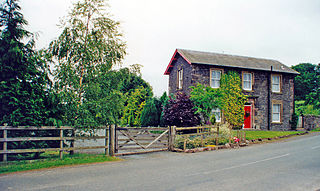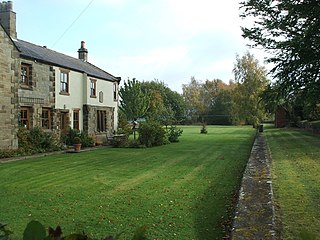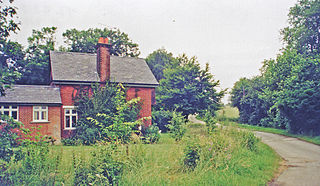Related Research Articles

Penygroes railway station was located in Penygroes, Gwynedd, Wales.

Groeslon railway station served the village of Groeslon, Gwynedd, Wales. It operated first as part of the Nantlle Tramway and afterwards as a railway under the auspices of several different companies. The station and line closed on 7 December 1964 as recommended in the Beeching Report.
Llanwnda railway station served the village of Llanwnda, Gwynedd, Wales.
Ordsall Lane railway station is a closed railway station on the Liverpool to Manchester line.

Weaste railway station is a closed station on the Liverpool to Manchester line located between Seedley and Eccles in Salford.
Belses railway station served the village of Belses, Scottish Borders, Scotland from 1849 to 1969 on the Waverley Route.
The Mold Railway was a railway company that built a line in north-east Wales. The line linked Mold to Chester and it opened on 14 August 1849. The company built a mineral branch line to Ffrith, opened in November 1849. Mold itself was an important regional centre, and contained considerable mineral resources.

Fountainhall railway station served the village of Fountainhall, Scottish Borders from 1848 to 1969 on the Waverley Route.
Farnworth & Bold railway station served the Farnworth area of Widnes, England. The station was on the southern section of the St Helens and Runcorn Gap Railway which was later absorbed by the London and North Western Railway.
Peasley Cross railway station served the central southern area of St Helens, England. It was situated on the central section of the St Helens and Runcorn Gap Railway which was later absorbed by the London and North Western Railway.
Golborne South railway station was one of two stations serving the town of Golborne, to the south of Wigan.

Lowton railway station served the village named Town of Lowton to the east of Newton-le-Willows and south of Golborne.

Smeafield railway station served the farmstead of Smeafield, Northumberland, England from 1871 to 1930 on the East Coast Main Line.
Plessey railway station served the hamlet of Plessey, Northumberland, England from 1859 to 1962 on the East Coast Main Line.

Pickhill railway station served the village of Pickhill, North Yorkshire, England from 1875 to 1959 on the Leeds-Northallerton Railway.

Hessay railway station served the village of Hessay, North Yorkshire, England from 1849 to 1964 on the Harrogate line.

Ingleby railway station was a railway station built to serve the village of Ingleby Greenhow in North Yorkshire, England. The station was on the North Yorkshire and Cleveland's railway line between Sexhow and Ingleby, which opened in 1857. The line was extended progressively until it met the Whitby & Pickering Railway at Grosmont. Ingleby station was closed in 1954 to passengers and four years later to goods. The station was located 19 miles (31 km) south of Stockton, and only 0.75 miles (1.21 km) west of Battersby railway station.
Sexhow railway station was a railway station built to serve the hamlet of Sexhow in North Yorkshire, England. The station was on the North Yorkshire and Cleveland's railway line between Picton and Stokesley, which opened in 1857. The line was extended progressively until it met the Whitby & Pickering Railway at Grosmont. Sexhow station was closed in 1954 to passengers and four years later to goods. The station was located 13 miles (21 km) south of Stockton, and 3.75 miles (6.04 km) west of Battersby railway station.
Frankland railway station served the village of Brasside, County Durham, England, from 1861 to 1877 on the Leamside Line.

Mardock railway station served the village of Wareside, Hertfordshire, England, from 1863 to 1964 by the Buntingford branch line.
References
- ↑ M E Quick, Railway Passenger Stations in England Scotland and Wales—A Chronology, The Railway and Canal Historical Society, 2002, p. 299
- ↑ "Disused Stations: Newstead". Disused Stations. Retrieved 7 February 2017.
| Preceding station | Disused railways | Following station | ||
|---|---|---|---|---|
| Melrose Line and station closed | North British Railway Waverley Route | St Boswells Line and station closed |